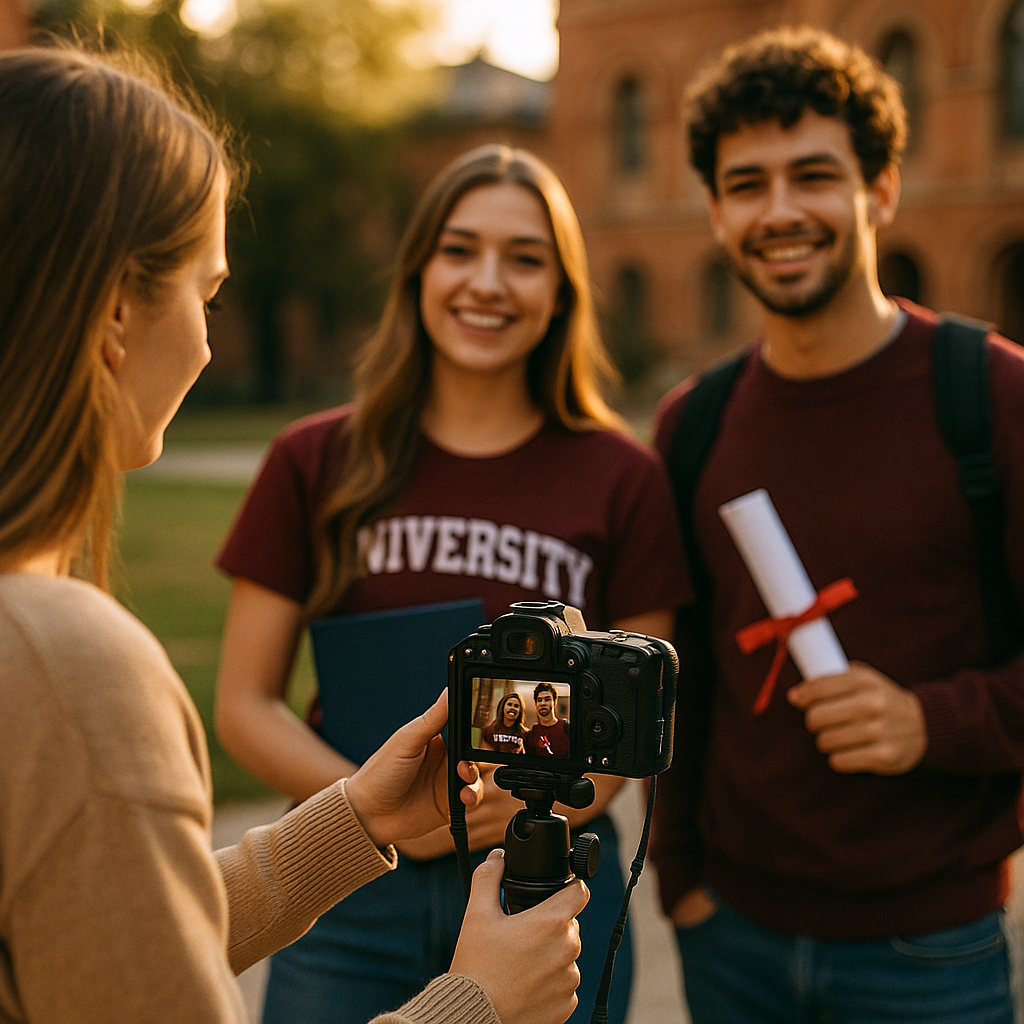Universities increasingly rely on fresh strategies for student recruitment, and one standout method is the use of student and alumni influencers. In this case study, we break down how a leading university successfully leveraged their community to attract applicants—offering actionable insights for institutions eager to modernize recruitment and connect authentically with Gen Z prospects.
Understanding University Influencer Marketing for Admissions
Influencer marketing isn’t only for consumer brands—universities are harnessing its power, too. By collaborating with student and alumni influencers, institutions humanize their recruitment efforts and extend authentic voices to prospective students. Recent survey data reveals that 76% of students trust peer recommendations over official advertisements, underscoring the strategic value of peer-driven outreach in higher education.
Identifying and Supporting Student Influencers for Recruitment Campaigns
Effective student recruitment through influencers begins with choosing the right voices. The university developed a comprehensive selection process based on authenticity, micro-follower engagement, and program diversity. Each influencer underwent a media literacy workshop to ensure that their content stayed ethical, accurate, and relatable.
- Authenticity metrics: Engagement rates and story shares were prioritized over follower count.
- Content support: Influencers received editorial calendars, but retained freedom for creative expression, maintaining trust with audiences.
- Resource investment: The university provided basic video equipment and editing resources to level up production quality across channels.
Engaging Alumni as Higher Education Influencers
While students bring fresh campus perspectives, alumni bring credibility and aspirational stories for prospects. The university catalogued alumni who had successfully transitioned into their industries, inviting them to share “day in their life” content, career-path Q&As, and mentorship stories on social media. Alumni influencer stories were distributed not only on LinkedIn but also via Instagram Reels and campus webinars.
- Trust Factor: Alumni with recent graduation years reassured families and applicants about employment prospects.
- Mentorship Integration: Virtual Q&A sessions enabled prospects to interact live, forging early professional connections and social proof.
Measuring Influencer Impact on University Recruitment
Quantifying the effect of student and alumni influencer collaboration was pivotal. The university used three primary metrics to monitor results:
- Application tracking: Applicants who engaged with influencer content converted at a 24% higher rate than those exposed solely to paid digital ads.
- Engagement analytics: Videos featuring a “student life” perspective drove 40% more social shares and direct message inquiries to admissions teams.
- Yield rates: Virtual events hosted or co-promoted by influencers consistently exceeded attendance targets and boosted admitted student yield.
Year-on-year, this multichannel influencer program was credited with a 13% lift in overall undergraduate application numbers. The university also found that influencer-initiated questions in webinars unmasked concerns not captured by traditional admissions forums, driving deeper applicant-admissions office engagement.
Addressing Challenges: Authenticity, Compliance, and Diversity
No recruitment strategy is without hurdles. Maintaining authenticity amid branded content is a key concern—audience trust can decline if posts seem overly scripted. By empowering influencers to disclose partnerships and focusing on “offline” stories (such as campus traditions and personal growth), the university kept messaging real.
- Compliance oversight: All digital content complied with institutional guidelines and relevant privacy regulations, with influencers completing digital responsibility training.
- Diversity and inclusion: Recruitment influencer cohorts reflected the university’s commitment to representing students of various backgrounds, interests, and academic paths.
Lessons Learned: Best Practices for University Influencer Recruitment
From planning to analytics, several actionable insights emerged:
- Choose influencers based on alignment with institutional values, not just social reach.
- Offer clear content guidelines—but emphasize authentic storytelling over marketing jargon.
- Invest in influencer training to ensure both compliance and ongoing creativity.
- Continuously solicit feedback from prospective students to refine messaging and format.
- Track recruitment KPIs and adjust strategy quarterly for sustained impact.
Whether for undergraduate, graduate, or international admissions, these practices help create a trustworthy, dynamic pipeline from applicant interest to enrollment.
Universities that incorporate students and alumni into their recruitment narrative can reach new audiences, foster trust, and directly influence application decisions. As proven in this case study, thoughtfully managed influencer programs are transforming higher education outreach in 2025 and set a competitive standard for the future.
FAQs: Student and Alumni Influencers in University Recruitment
-
How do universities find suitable student influencers?
Universities identify student influencers through campus organizations, social media contests, faculty nominations, and by tracking engagement—not just follower counts—on existing platforms. -
What platforms work best for university influencer recruitment campaigns?
Instagram, TikTok, and YouTube are highly effective for student-led storytelling, while LinkedIn and webinars suit alumni influencers targeting career-focused prospects. -
How can institutions ensure influencer messaging remains authentic?
Give influencers creative freedom, encourage disclosure, and prioritize content that highlights genuine experiences rather than scripted marketing messages. -
Are there compliance issues with using student influencers?
Yes—universities should train influencers on privacy, transparency, and institutional guidelines, plus monitor compliance with all relevant educational and advertising regulations. -
What is the main benefit of alumni influencers in recruitment?
Alumni offer real-world credibility and act as tangible proof of successful career outcomes, which is especially persuasive to both prospective students and their families.
